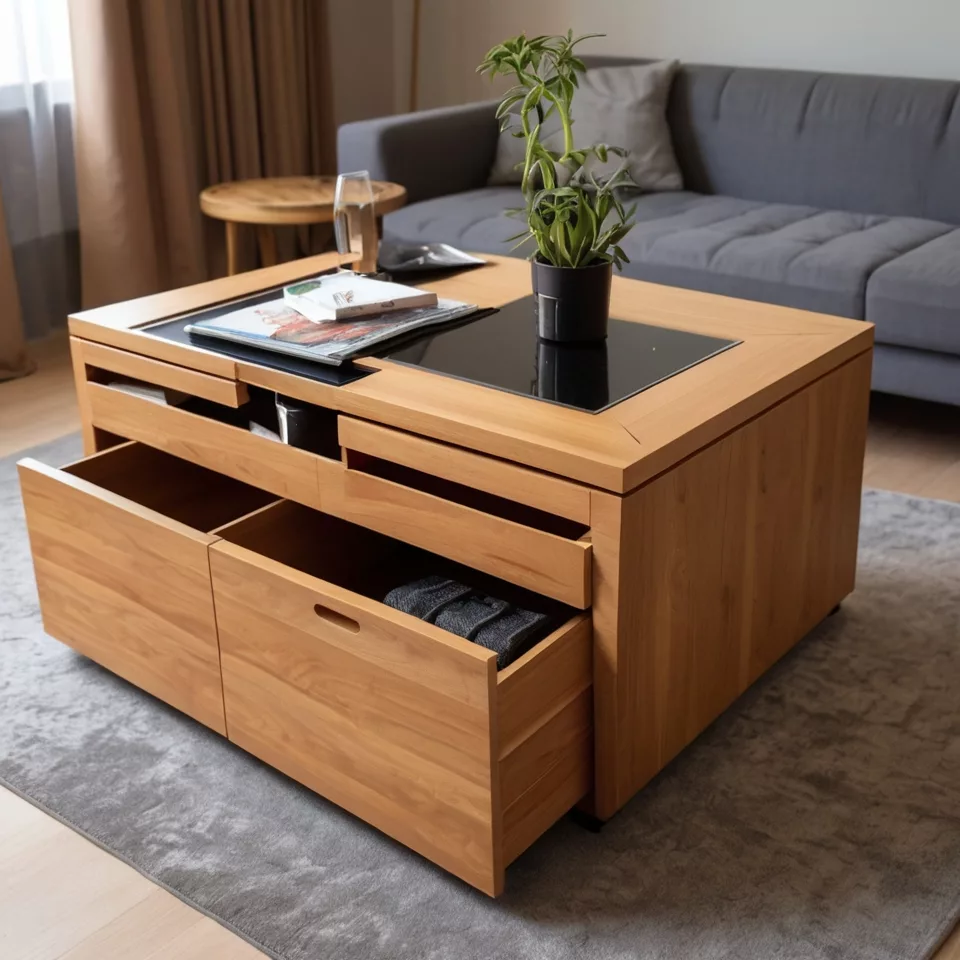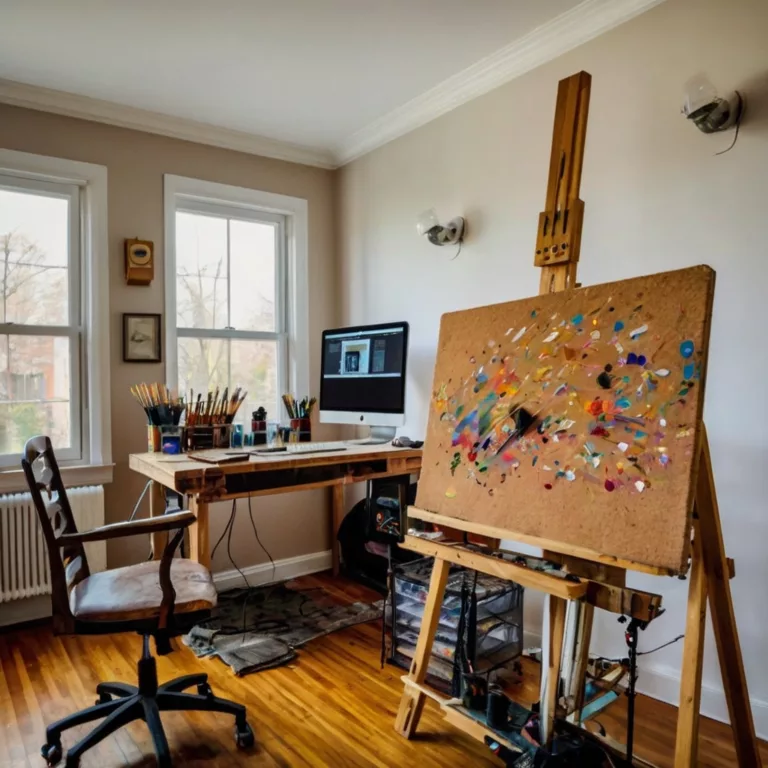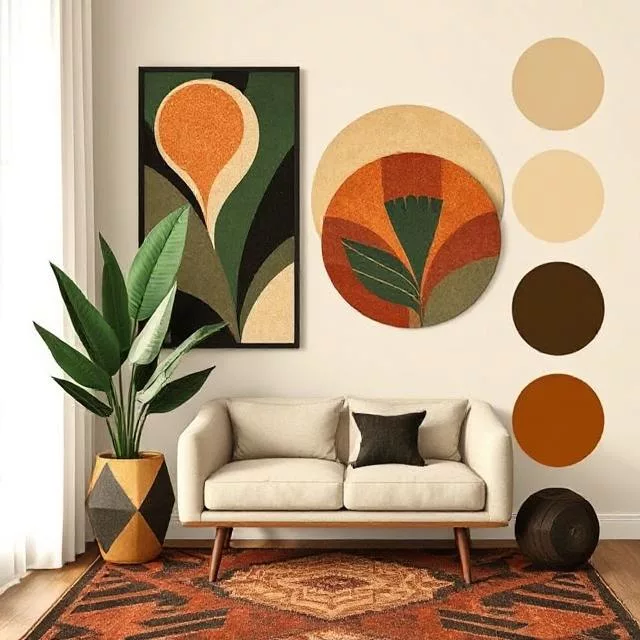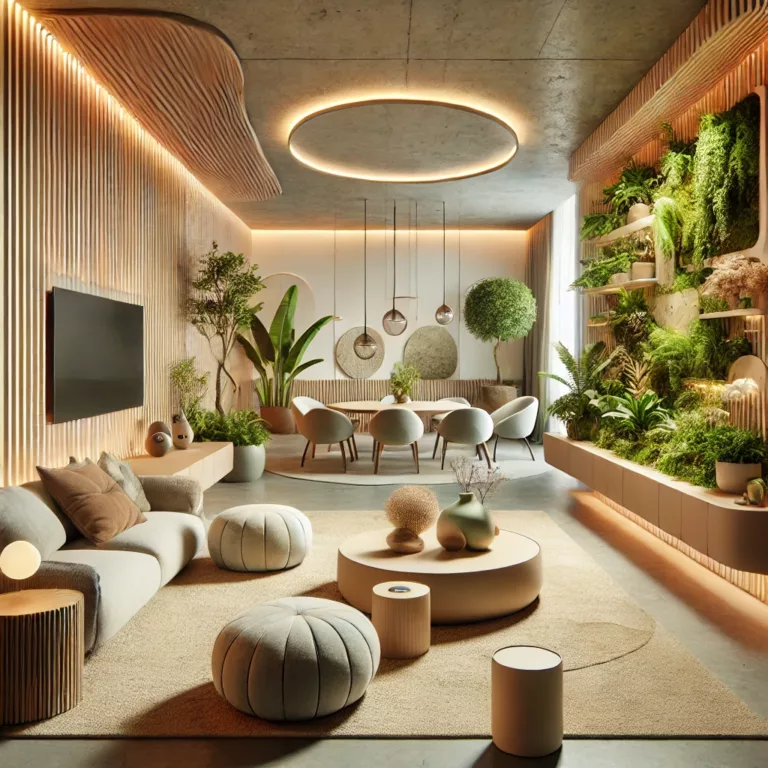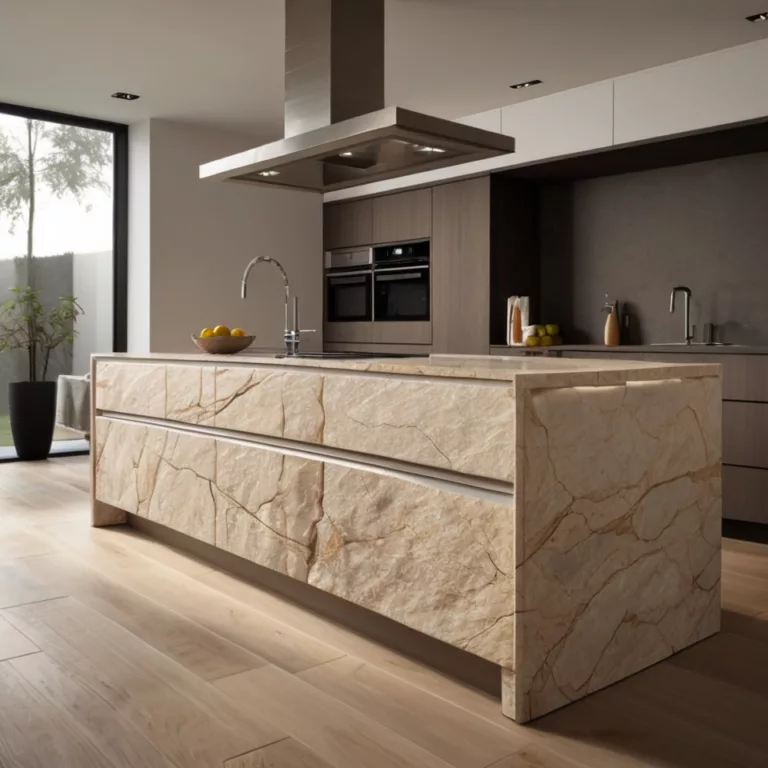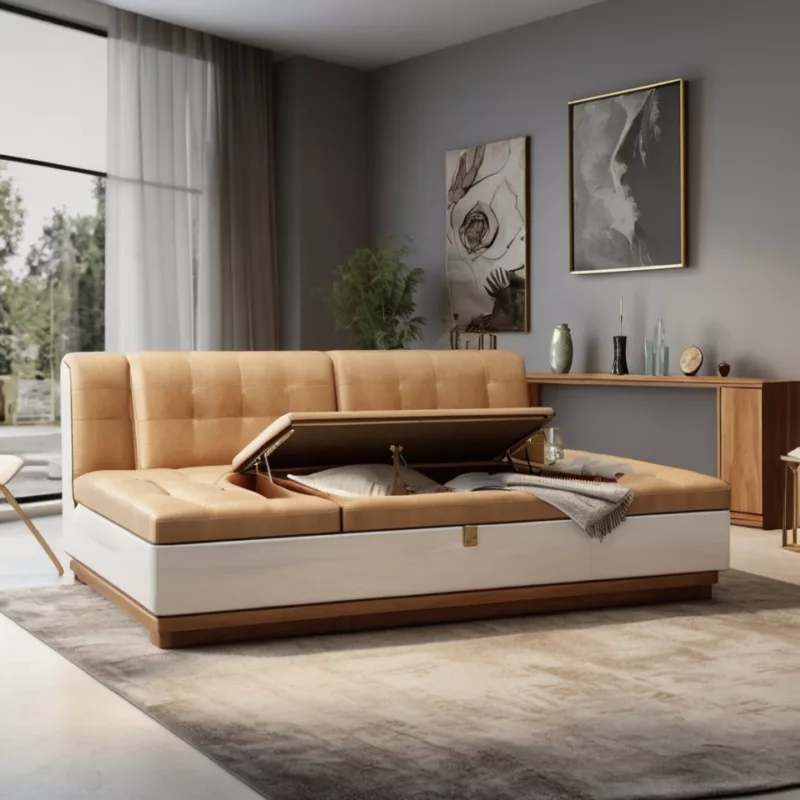
Table of Contents
- Introduction to Multi-Functional Furniture
- The Growing Need for Space-Saving Solutions
- Types of Multi-Functional Furniture
- Storage Solutions That Double as Furniture
- Convertible Sleeping Solutions
- Multi-Purpose Seating Options
- Transformable Tables and Desks
- Modular Furniture Systems
- Smart Storage Integration
- Design Trends in Multi-Functional Furniture
- Choosing the Right Multi-Functional Furniture
- Budget-Friendly Options
- Maintenance and Care Tips
- Future of Multi-Functional Furniture
- Conclusion
In today’s rapidly evolving urban landscape, multi-functional furniture has emerged as the ultimate solution for maximizing living spaces without compromising on style or comfort. As cities become increasingly populated and living spaces shrink, the demand for innovative furniture that serves multiple purposes has never been higher.
Multi-functional furniture represents a revolutionary approach to interior design, where every piece serves at least two purposes, effectively doubling the utility of your investment. This smart furniture category encompasses everything from storage ottomans that provide seating and organization to Murphy beds that transform home offices into guest bedrooms within seconds.
The concept of multi-functional furniture isn’t merely about saving space—it’s about creating intelligent living environments that adapt to your lifestyle needs. Whether you’re living in a studio apartment, a tiny house, or simply want to maximize the efficiency of your existing space, multi-functional furniture offers endless possibilities for creative solutions.
The Growing Need for Space-Saving Solutions
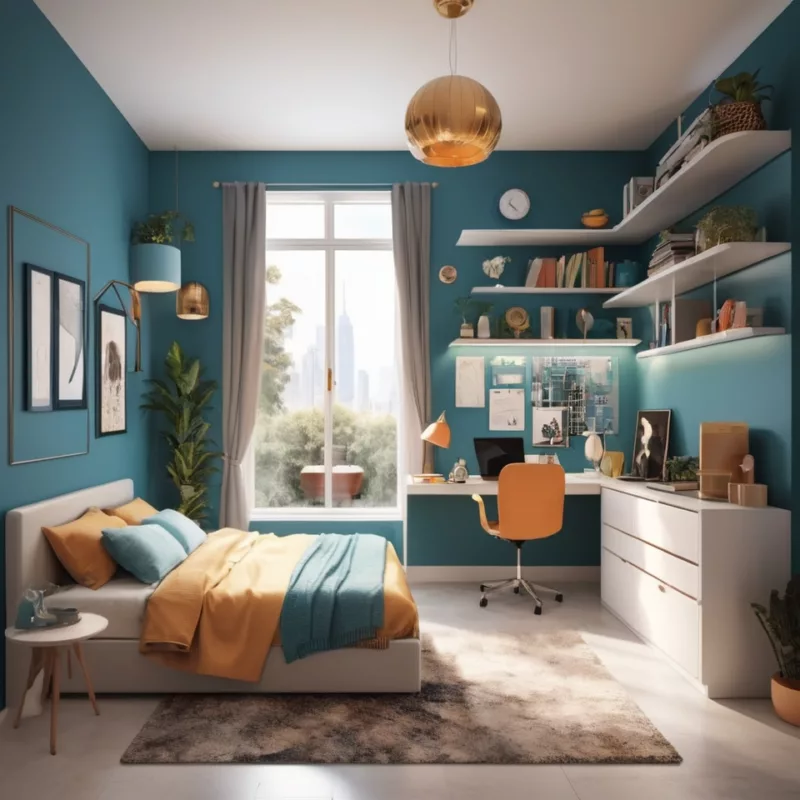
The global shift toward smaller living spaces has created an unprecedented demand for multi-functional furniture. As cities become increasingly populated due to rapid urbanization, living space has become a premium commodity. This trend has fundamentally changed how we approach interior design and furniture selection.
Modern consumers are increasingly prioritizing functionality over mere aesthetics. The rise of remote work, digital nomadism, and minimalist lifestyles has further accelerated the need for furniture that can seamlessly transition between different uses throughout the day. A dining table that converts to a workspace, or a sofa that transforms into a bed, represents the perfect marriage of practicality and innovation.
According to Transparency Market Research, the multifunctional furniture market was valued at US$ 7.3 Bn in 2023, It is estimated to grow at a CAGR of 6.6% from 2024 to 2034 and reach US$ 14.7 Bn by the end of 2034 This remarkable growth trajectory underscores the increasing importance of multi-functional furniture in modern living.
Economic factors also play a crucial role in driving demand. When space is limited and expensive, investing in multi-functional furniture becomes a financially sound decision. Instead of purchasing separate pieces for different functions, consumers can achieve multiple purposes with a single, well-designed item.
Storage-Integrated Pieces
Storage-integrated multi-functional furniture represents the most popular category in this space-saving revolution. These pieces cleverly conceal storage compartments within their primary function, offering seamless organization solutions that maintain aesthetic appeal.
Ottoman storage benches exemplify this category perfectly. Ottomans are a great solution to a small space storage problem because of their versatility. They can serve as bonus seating, a coffee table, or a side table, all while concealing clutter. These versatile pieces can store everything from blankets and pillows to books and electronic devices.
Coffee tables with built-in storage have become increasingly sophisticated, featuring hidden compartments, drawers, and even lift-top mechanisms that reveal spacious storage areas. These pieces maintain the traditional coffee table aesthetic while providing substantial storage capacity for living room essentials.
Convertible Sleeping Solutions
The bedroom furniture category has seen remarkable innovation in multi-functional design. Murphy beds, also known as wall beds, have experienced a renaissance in modern interior design. Murphy bed by Hokku Designs is both a place to sleep and a spot for your clothes to live, as it comes with a bed frame and a full closet.
Sofa beds have evolved far beyond their traditional uncomfortable reputation. Modern designs feature high-quality mattresses and sophisticated mechanisms that allow for quick and easy conversion between seating and sleeping configurations. One standout piece is the solid wood sofa bed—a folding, dual-purpose marvel that provides comfort and space efficiency.
Daybed systems offer another excellent solution, functioning as comfortable seating during the day and transforming into sleeping arrangements for guests. These pieces often include additional storage drawers or shelving units, maximizing their utility in small spaces.
Multi-Purpose Seating
Multi-functional pieces, like storage ottomans or coffee tables that double as desks, offer practical solutions for tiny spaces. Seating solutions in the multi-functional furniture category have become increasingly creative and sophisticated.
Modular seating systems allow users to reconfigure their living spaces based on current needs. Individual pieces can function as standalone chairs, combine to form sofas, or arrange into various configurations for entertaining. Some designs include hidden storage compartments, wireless charging stations, or even built-in side tables.
Bench seating with storage capabilities provides both seating and organization solutions. These pieces work particularly well in entryways, bedrooms, or dining areas where additional storage is always welcome.
Storage Solutions That Double as Furniture
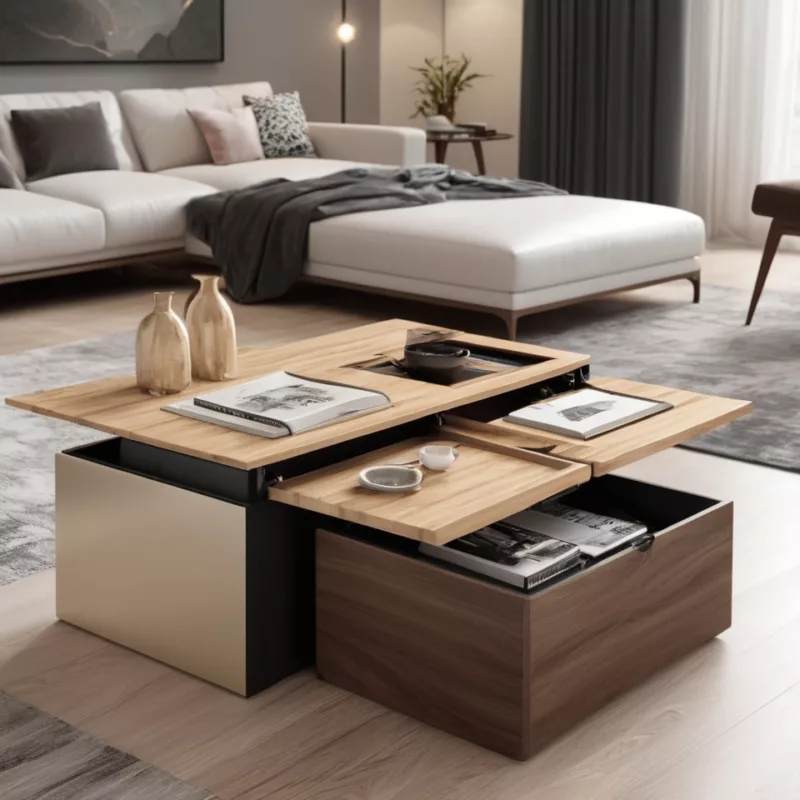
Hidden Storage Innovations
The art of concealing storage within furniture has reached new heights of sophistication. Modern multi-functional furniture incorporates storage solutions so seamlessly that they become invisible until needed. Hidden Storage: Ottomans or coffee tables with built-in storage are perfect for keeping small spaces tidy.
Hollow furniture pieces, such as storage cubes that double as seating, provide substantial storage capacity while maintaining clean, minimalist aesthetics. These pieces can store seasonal items, office supplies, or personal belongings without cluttering the visual space.
Furniture with false bottoms or hidden compartments offers secure storage for valuable items while maintaining the piece’s primary function. These innovative designs often feature clever mechanisms that reveal storage areas through sliding panels, lifting tops, or rotating sections.
Vertical Storage Solutions
Maximizing vertical space through multi-functional furniture has become essential in small living environments. Tall storage units that incorporate seating areas, work surfaces, or display space make the most of available height while serving multiple purposes.
Ladder-style shelving units that include integrated desk surfaces create efficient home office solutions. These pieces combine storage, display, and workspace functionality in a single, space-efficient design.
Wall-mounted furniture with fold-down capabilities represents another innovative approach to vertical storage. These pieces remain flush against walls when not in use, appearing as decorative elements while hiding their functional capabilities.
Convertible Sleeping Solutions
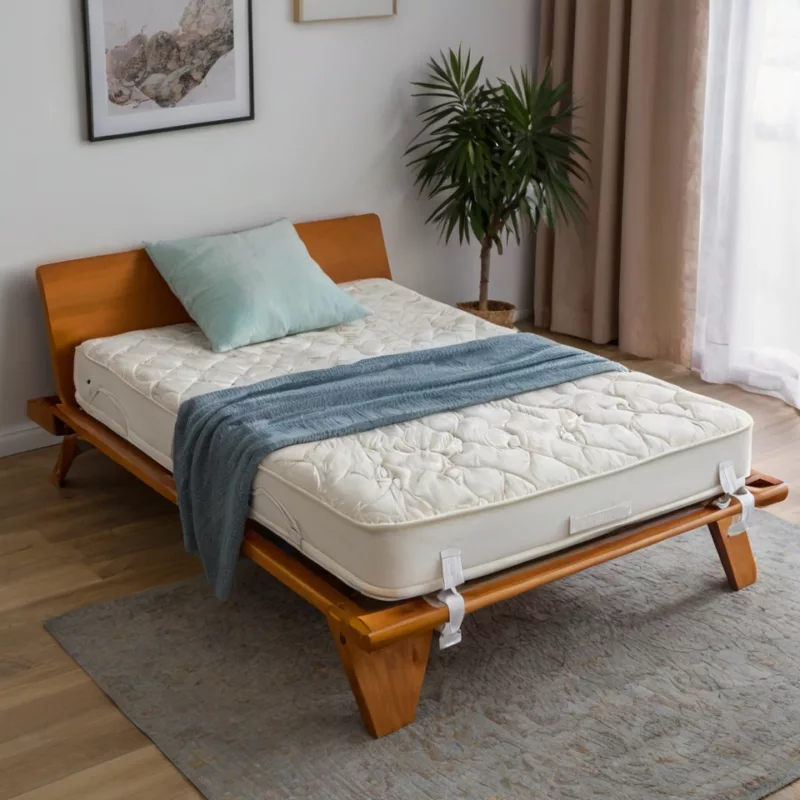
Murphy Bed Evolution
Murphy beds have undergone significant evolution, transforming from basic fold-down beds to sophisticated multi-functional systems. If you’re looking to make the most of your small space, however, a Murphy bed with built-in cabinets, nightstands and/or shelves can make a big difference for the piece of furniture to be functional when the bed is not
Companies like Expand Furniture specialize in creating Murphy bed systems that integrate entire bedroom suites, including side tables, lighting, and storage solutions. When folded up, these systems can reveal home office spaces, entertainment centers, or additional storage areas.
The mechanisms have also improved significantly, with many modern Murphy beds featuring easy-lift systems that require minimal effort to operate. Some designs include safety features and automated systems that make bed deployment and storage virtually effortless.
Sofa Bed Innovations
Contemporary sofa beds have moved far beyond their traditional limitations. Transformable Sofas: A sofa that turns into a bed or sectional seating can save space and add flexibility. Modern designs feature high-quality memory foam mattresses, robust support systems, and sophisticated conversion mechanisms.
Sectional sofa beds offer even greater flexibility, allowing users to reconfigure seating arrangements while maintaining the option to create sleeping surfaces. These systems often include storage compartments, USB charging ports, and integrated lighting solutions.
Some innovative designs feature modular components that can separate entirely, creating multiple seating pieces or combining to form larger sleeping surfaces. This flexibility makes them ideal for entertaining and accommodating overnight guests.
Daybed Systems
Daybed furniture has gained popularity as a versatile solution for small spaces. These pieces function as comfortable seating during the day and transform into sleeping arrangements without requiring complex conversion mechanisms.
Modern daybed designs often include trundle systems that pull out to create additional sleeping space, effectively doubling the sleeping capacity within the same footprint. Some models incorporate storage drawers or shelving units, further maximizing their utility.
Built-in daybed systems that integrate with wall units or room dividers create efficient use of space while providing both seating and sleeping solutions. These custom-style pieces often include integrated storage, lighting, and even workspace areas.
Multi-Purpose Seating Options
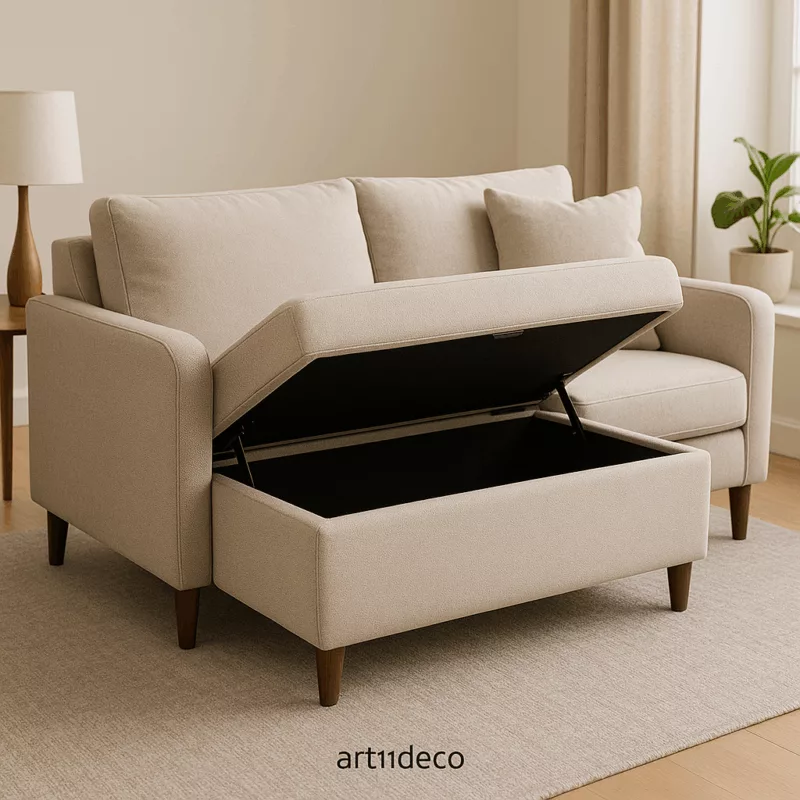
Storage-Integrated Seating
Seating furniture with integrated storage has become increasingly sophisticated, offering solutions that maintain comfort while providing substantial storage capacity. These pieces cleverly incorporate storage compartments that remain easily accessible while maintaining the primary seating function.
Window seat installations with built-in storage create efficient use of otherwise underutilized space. These custom solutions often include lift-top mechanisms that reveal storage areas for seasonal items, linens, or personal belongings.
Modular seating systems with integrated storage allow users to create custom configurations while maintaining organized storage solutions. Individual pieces can include various storage options, from hidden compartments to open shelving.
Convertible Seating Designs
Convertible seating solutions offer remarkable flexibility in small spaces. Ottoman-to-chair conversions provide additional seating when needed while maintaining a low profile when used as footrests or coffee table alternatives.
Expandable seating systems allow users to increase seating capacity for entertaining while maintaining compact configurations for daily use. These pieces often include mechanisms that extend seating surfaces or reveal additional seating components.
Some innovative designs feature rotating or sliding mechanisms that transform single seats into multi-person seating arrangements. These solutions are particularly valuable in studio apartments or small living rooms where seating needs vary throughout the day.
Ergonomic Considerations
Modern multi-functional seating doesn’t compromise on comfort or ergonomic design. Advanced engineering ensures that pieces maintain proper support and comfort standards regardless of their configuration or secondary functions.
Adjustable features allow users to customize seating height, back support, and armrest positions, ensuring comfort in all use modes. These features are particularly important in pieces that serve as both casual seating and work chairs.
Memory foam integration and advanced cushioning systems ensure that multi-functional seating remains comfortable for extended periods, whether used for relaxation, work, or sleeping.
Transformable Tables and Desks
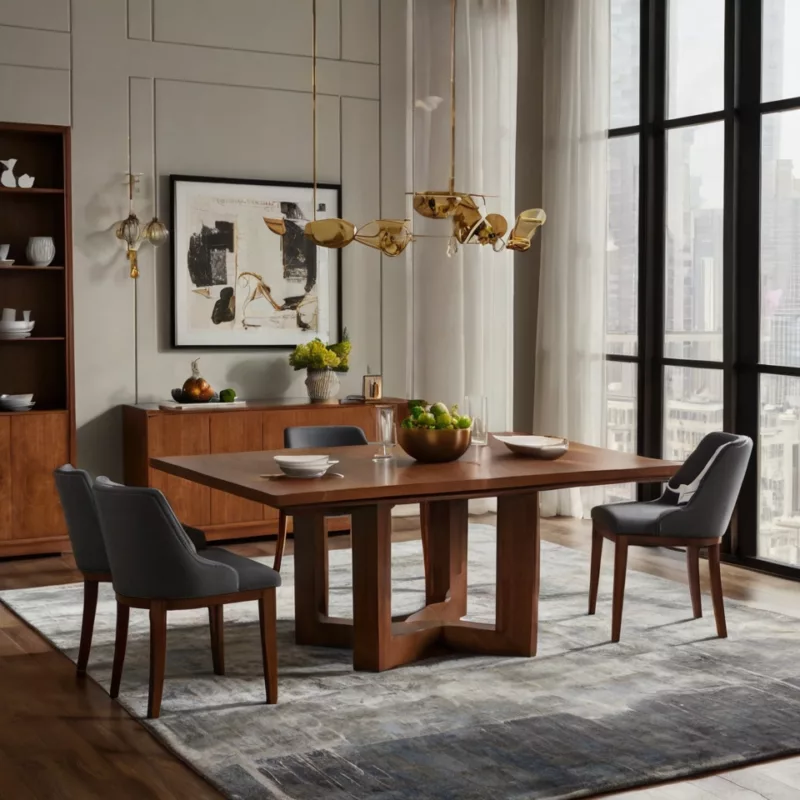
Expandable Dining Solutions
Expandable dining tables represent one of the most practical applications of multi-functional furniture in small spaces. These pieces allow users to maintain compact footprints for daily use while expanding to accommodate entertaining needs.
Modern expandable tables feature sophisticated mechanisms that allow for smooth expansion and contraction. Some designs include hidden leaf storage, ensuring that expansion components remain easily accessible without requiring separate storage space.
Butterfly leaf systems and telescoping mechanisms have made table expansion more user-friendly than ever. These systems often require minimal effort to operate and can transform compact tables into substantial dining surfaces within minutes.
Convertible Work Surfaces
The rise of remote work has created unprecedented demand for furniture that can transition between dining and workspace functions. Multi-functional pieces, like storage ottomans or coffee tables that double as desks, offer practical solutions for tiny spaces.
Height-adjustable tables offer the ultimate flexibility, allowing users to create comfortable dining surfaces, standing desks, or traditional work surfaces as needed. These pieces often include integrated cable management systems and storage solutions for office supplies.
Fold-out desk systems that integrate with existing furniture create efficient workspace solutions without requiring dedicated office furniture. These systems can integrate with bookshelves, wall units, or even bed frames to create functional work areas.
Coffee Table Transformations
Coffee tables have evolved into sophisticated multi-functional pieces that serve far beyond their traditional role. Lift-top coffee tables reveal hidden storage compartments while creating elevated surfaces suitable for dining or working.
Expandable coffee tables can transform into dining tables, providing solutions for small apartments where separate dining tables aren’t practical. These pieces often include storage solutions for table linens, dinnerware, or other dining essentials.
Modular coffee table systems allow users to reconfigure pieces based on current needs. Individual components can function as side tables, footrests, or combine to create larger surfaces for entertaining.
Modular Furniture Systems {#modular-systems}
Customizable Configurations
Modular furniture systems offer unparalleled flexibility for small spaces, allowing users to create custom configurations that adapt to changing needs. Some popular functional minimalist furniture pieces for 2024 include modular storage systems, multi-purpose seating with built-in storage, convertible tables and desks, and space-saving folding furniture.
These systems typically consist of individual components that can connect in various ways, creating different furniture arrangements based on current requirements. Components might include seating modules, storage units, table surfaces, or specialty pieces designed for specific functions.
The beauty of modular systems lies in their adaptability. Users can reconfigure their furniture layouts for different activities, seasons, or life changes without requiring entirely new furniture purchases.
Scalable Solutions
Modular furniture systems can grow with users’ needs, making them particularly valuable for those in transitional living situations. Additional modules can be added to expand functionality or capacity as requirements change.
Some systems include specialty modules for specific purposes, such as office components, entertainment units, or storage solutions. This modularity allows users to customize their furniture investments based on personal priorities and lifestyle needs.
The ability to expand or reconfigure modular systems makes them excellent long-term investments. Users can start with basic configurations and add components as budget and space allow.
Integration Capabilities
Modern modular systems often include integration capabilities for technology, lighting, and other modern conveniences. These features ensure that furniture remains functional and relevant as technology evolves.
Some systems include built-in charging stations, cable management solutions, or even integrated lighting systems. These features eliminate the need for separate accessories while maintaining clean, organized appearances.
Smart home integration capabilities allow some modular systems to connect with home automation systems, enabling remote control of lighting, charging, or even motorized components.
Invisible Storage Solutions
The most effective multi-functional furniture incorporates storage solutions that remain completely invisible until needed. These designs maintain clean aesthetics while providing substantial storage capacity.
Furniture with hidden compartments accessed through touch mechanisms, magnetic closures, or sliding panels keeps storage completely concealed. These solutions are particularly valuable for storing items that need to remain accessible but out of sight.
False bottom designs and hollow furniture pieces provide secure storage for valuable items while maintaining the piece’s primary function. These solutions often include soft-close mechanisms and protective padding to ensure stored items remain safe.
Organizational Systems
Integrated organizational systems within multi-functional furniture help users maintain order even in small spaces. These systems often include dividers, compartments, and specialized storage solutions for different types of items.
Drawer systems with adjustable dividers allow users to customize storage based on their specific needs. These features ensure that storage remains functional and organized regardless of what items are being stored.
Some storage systems include specialized compartments for specific items, such as wine storage, media components, or office supplies. These targeted solutions ensure that stored items remain easily accessible and properly organized.
Accessibility Features
Modern multi-functional furniture prioritizes accessibility, ensuring that storage solutions remain easy to use for people of all ages and abilities. Soft-close mechanisms, easy-grip handles, and smooth operation are standard features.
Height-appropriate storage solutions ensure that frequently used items remain within easy reach. This consideration is particularly important in multi-generational households or for users with mobility considerations.
Clear labeling systems and visual organization cues help users maintain organized storage systems. These features are particularly valuable in complex multi-functional pieces with multiple storage areas.
Design Trends in Multi-Functional Furniture {#design-trends}
Minimalist Aesthetics
Low-profile furniture is another trend to watch in 2025. These pieces have a sleek, minimalist design that creates a sense of openness and space. The minimalist design trend has significantly influenced multi-functional furniture, with clean lines and simple forms becoming increasingly popular.
Minimalist multi-functional furniture focuses on essential functions while eliminating unnecessary decorative elements. This approach creates pieces that blend seamlessly into small spaces without overwhelming the visual environment.
The use of neutral colors, natural materials, and simple geometric shapes allows multi-functional furniture to complement various interior design styles while maintaining timeless appeal.
Sustainable Materials
Environmental consciousness has driven increased demand for multi-functional furniture made from sustainable materials. According to Planner5D’s furniture trends analysis, manufacturers are increasingly using recycled materials, sustainably sourced wood, and eco-friendly manufacturing processes to meet consumer demand for environmentally responsible furniture.
Bamboo, reclaimed wood, and recycled metal have become popular choices for multi-functional furniture construction. These materials offer durability and aesthetic appeal while supporting environmental sustainability.
The longevity focus inherent in multi-functional furniture aligns well with sustainability goals, as these pieces are designed to serve multiple purposes over extended periods, reducing the need for frequent furniture replacement.
Technology Integration
Modern multi-functional furniture increasingly incorporates technology integration, including wireless charging surfaces, built-in speakers, and smart home connectivity. These features enhance functionality while maintaining clean, uncluttered appearances.
USB charging ports, cable management systems, and integrated lighting have become standard features in many multi-functional pieces. These technological integrations ensure that furniture remains relevant and functional in our increasingly connected world.
Some innovative designs include motorized components that allow for remote operation of convertible features. These advanced systems make multi-functional furniture even more user-friendly and convenient.
Choosing the Right Multi-Functional Furniture {#choosing-right}
Assessing Space Requirements
Successful multi-functional furniture selection begins with a thorough assessment of available space and functional requirements. Measuring existing spaces and understanding traffic patterns helps ensure that chosen pieces will function effectively.
Consider both the primary and secondary functions of potential pieces to ensure they align with your lifestyle needs. A piece that serves functions you rarely use may not provide the value expected from multi-functional furniture.
Evaluate the space requirements for all functional modes of each piece. Some multi-functional furniture requires significant additional space when converted or expanded, which must be factored into selection decisions.
Quality Considerations
The mechanisms and construction quality of multi-functional furniture directly impact long-term satisfaction and durability. Investing in well-constructed pieces with robust mechanisms ensures reliable operation over time.
Pay particular attention to conversion mechanisms, hinges, and moving parts, as these components experience the most wear during regular use. High-quality hardware and smooth operation are essential for satisfactory long-term performance.
Consider the materials used in construction, particularly for pieces that will see frequent conversion between functions. Durable materials and finishes ensure that furniture maintains its appearance despite regular use.
Budget Planning
Multi-functional furniture often represents a higher initial investment compared to single-purpose pieces, but the value proposition becomes clear when considering the multiple functions provided. Calculate the cost of purchasing separate pieces for each function to understand the true value.
Consider the long-term investment value of quality multi-functional furniture. Well-constructed pieces that serve multiple functions over many years often provide better value than cheaper alternatives that require frequent replacement.
Factor in the space-saving value when evaluating costs. In expensive urban markets, the ability to eliminate the need for additional furniture pieces can represent significant savings in terms of space efficiency.
Lifestyle Compatibility
Choose multi-functional furniture that aligns with your actual lifestyle and usage patterns. Pieces that require frequent conversion between functions may not be suitable for users who prefer static arrangements.
Consider the ease of operation for all intended users. Complex conversion mechanisms may be problematic for elderly users or those with mobility limitations.
Evaluate maintenance requirements and ensure that chosen pieces can be properly cared for within your routine. Some multi-functional furniture requires more maintenance than traditional pieces due to their complex mechanisms.
Budget-Friendly Options {#budget-friendly}
DIY Solutions
Creative individuals can create effective multi-functional furniture through DIY projects that cost significantly less than commercial alternatives. Simple storage ottomans, convertible tables, and modular systems can be constructed using basic woodworking skills and materials.
Repurposing existing furniture into multi-functional pieces offers another budget-friendly approach. Adding storage compartments, expanding surfaces, or combining pieces can create effective multi-functional solutions at minimal cost.
Online resources and tutorials provide detailed instructions for creating various multi-functional furniture pieces. These resources often include material lists, cutting instructions, and assembly guidance for successful DIY projects.
Affordable Commercial Options
The growing market for multi-functional furniture has led to increased availability of budget-friendly options from mainstream retailers. These pieces often provide excellent value while maintaining essential functionality.
Flat-pack furniture retailers offer numerous multi-functional options at competitive prices. While these pieces may not match the quality of premium alternatives, they provide accessible entry points into multi-functional furniture.
Second-hand markets and online marketplaces often feature quality multi-functional furniture at reduced prices. These sources can provide access to higher-end pieces at more affordable price points.
Value Maximization Strategies
Focus on pieces that serve the most critical functions for your lifestyle to maximize value from budget purchases. Prioritizing essential multi-functional pieces ensures that limited budgets provide maximum impact.
Consider purchasing multi-functional furniture during sales events or end-of-season clearances. Many retailers offer significant discounts on furniture during these periods.
Evaluate the cost-per-function ratio when comparing options. Pieces that serve numerous functions may justify higher prices when considered on a per-function basis.
Maintenance and Care Tips {#maintenance}
Mechanism Care
The moving parts and conversion mechanisms in multi-functional furniture require regular maintenance to ensure smooth operation. Regular lubrication of hinges, slides, and pivot points prevents wear and ensures continued functionality.
Follow manufacturer guidelines for maintenance schedules and recommended lubricants. Using inappropriate lubricants can damage mechanisms or attract dirt and debris that interfere with operation.
Inspect mechanisms regularly for signs of wear, loose fasteners, or damage. Addressing minor issues promptly prevents more serious problems that could require expensive repairs or replacement.
Cleaning Considerations
Multi-functional furniture often includes various materials and finishes that require different cleaning approaches. Understanding proper cleaning methods for each component ensures that furniture maintains its appearance and function.
Pay particular attention to storage areas and hidden compartments, as these spaces can accumulate dust and debris over time. Regular cleaning of these areas prevents odors and maintains hygienic conditions.
Avoid using harsh chemicals or abrasive cleaners on conversion mechanisms, as these substances can damage protective coatings and interfere with smooth operation.
Preventive Maintenance
Implementing preventive maintenance routines extends the life of multi-functional furniture and ensures continued reliable operation. Regular inspections and minor adjustments prevent major problems.
Keep storage areas organized and avoid overloading storage compartments or conversion mechanisms. Excessive weight can strain components and lead to premature failure.
Protect furniture from environmental factors that can damage mechanisms, such as excessive humidity, direct sunlight, or temperature extremes. These conditions can cause wood to swell, metal to corrode, or mechanisms to bind.
Future of Multi-Functional Furniture {#future}
Emerging Technologies
The future of multi-functional furniture will likely include increased integration with smart home systems, automated conversion mechanisms, and advanced materials that enhance functionality while reducing weight and complexity.
Motorized systems controlled by smartphone apps or voice commands will make multi-functional furniture even more convenient and user-friendly. These systems will allow for remote operation and preset configurations.
Advanced materials, including shape-memory alloys and smart textiles, will enable new types of multi-functional furniture that can change properties or configurations automatically based on environmental conditions or user preferences.
Design Innovation
Future multi-functional furniture will likely become even more sophisticated, with seamless integration of multiple functions and improved aesthetic appeal. The distinction between primary and secondary functions will continue to blur.
Modular systems will become increasingly sophisticated, with components that can communicate with each other to create coordinated functionality. These systems will adapt automatically to usage patterns and user preferences.
Sustainable design will become increasingly important, with manufacturers developing multi-functional furniture that can be easily disassembled, recycled, or repurposed at the end of its useful life.
Market Evolution
The multi-functional furniture market will continue to expand as urbanization increases and living spaces become smaller. This growth will drive innovation and competition, leading to better products at more affordable prices.
Customization options will become more accessible, allowing consumers to specify exact configurations and functions for their specific needs. This trend will be supported by improved manufacturing technologies and direct-to-consumer sales models.
The rental market for multi-functional furniture will likely expand, allowing consumers to access high-quality pieces without the commitment of purchase. This model will be particularly attractive to urban dwellers and those in transitional living situations.
Conclusion {#conclusion}
Multi-functional furniture represents a fundamental shift in how we approach interior design and space utilization. As living spaces continue to shrink and our lifestyles become more dynamic, the importance of furniture that can adapt to multiple purposes becomes increasingly critical.
The evolution from simple dual-purpose pieces to sophisticated, technology-integrated systems demonstrates the rapid advancement in this field. Modern multi-functional furniture successfully balances aesthetics, functionality, and durability while addressing the practical needs of contemporary living.
Think multifunctional pieces that can serve more than one purpose—such as a sofa that doubles as a bed or a coffee table with hidden storage. These pieces cater to the growing demand for furniture that is not only stylish but also practical. This trend toward practical, space-efficient solutions will continue to drive innovation in furniture design.
The investment in quality multi-functional furniture pays dividends through improved space utilization, enhanced functionality, and long-term value. As the market continues to mature, consumers can expect even more sophisticated options that seamlessly integrate multiple functions while maintaining aesthetic appeal.
Whether you’re furnishing a studio apartment, preparing for a lifestyle change, or simply want to maximize the efficiency of your existing space, multi-functional furniture offers solutions that can transform how you live and interact with your environment. The key lies in understanding your specific needs, evaluating available options carefully, and choosing pieces that will serve you well for years to come.
The future of multi-functional furniture looks bright, with continued innovation driving new possibilities for space-efficient living. As we move forward, these intelligent furniture solutions will become increasingly essential tools for creating comfortable, functional, and beautiful living spaces regardless of their size.

